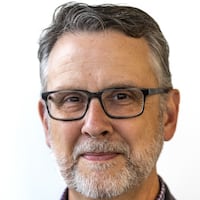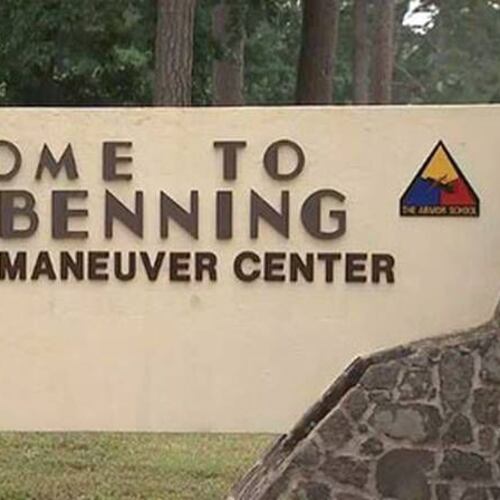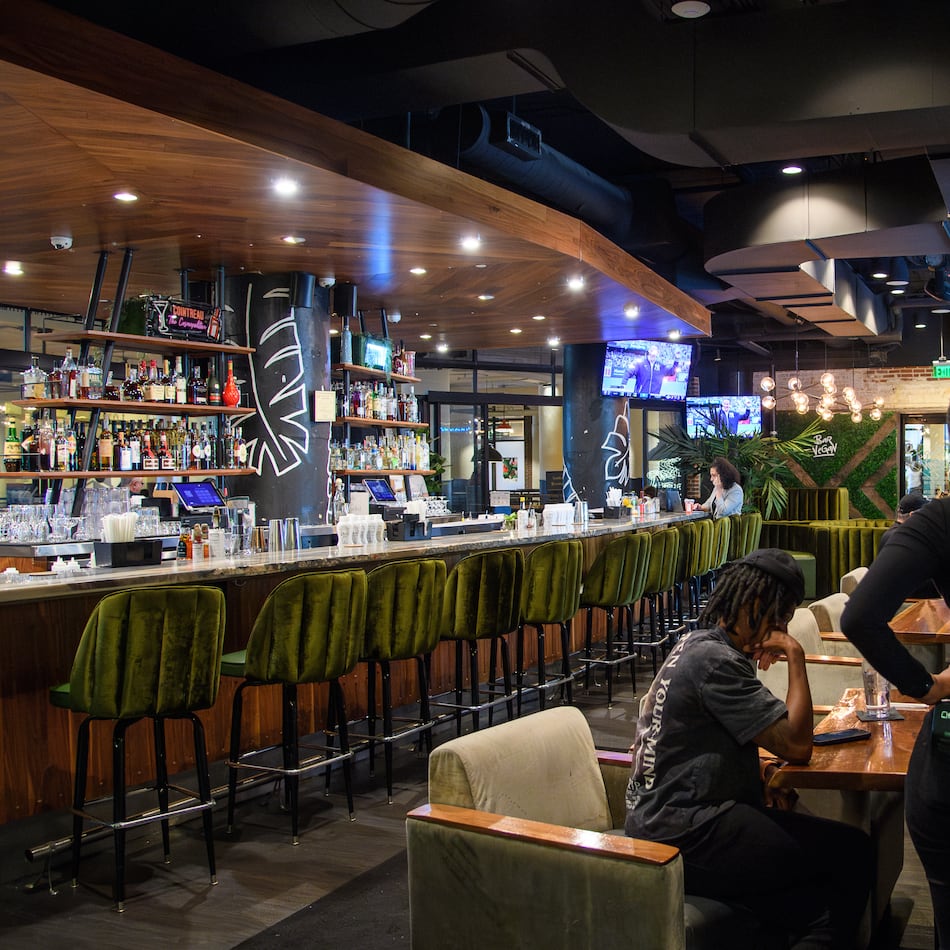In 2019, members of the violent neo-Nazi organization the Base gathered on a North Georgia compound to train and plan terrorist strikes they hoped would lead to the fall of the United States government, but they had no real experience with combat.
Matthew Ryan Burchfield, who had been living in Savannah, was among them as he passed through the Rome compound on his way to Ukraine to fight with a far-right paramilitary group.
He is part of a collection of thousands of foreign fighters who have poured into eastern Ukraine since the conflict began with Russia’s invasion and annexation of Crimea in 2014.
Many are white supremacists and neo-Nazis who have been animated by the struggle in a vastly white European nation and the opportunity to gain real-world fighting experience. Watchdogs that monitor extremist groups say they are particularly concerned about those who have traveled from western nations because it is believed they view the fighting in Ukraine as a training ground for future violence in their home countries.
“There’s been recruitment, saying, ‘This is your training for boogaloo, a second civil war in the States,’” said David Malet, a professor in the School of Public Affairs at American University and an expert on transnational fighters.
And while in recent years Ukraine had discouraged such radical foreigners from entering the country, the government has issued new calls for international volunteers to help turn back the Russian invasion. On Wednesday, the Counter Extremism Project issued a fresh warning that the invasion “has sparked online activity from far-right white nationalists and neo-Nazi groups” motivated to join the conflict.
Far-right paramilitary groups like the Azov Battalion rose up in response to the 2014 Crimea crisis to fight separatists in eastern Ukraine. The groups’ white supremacist and antisemitic beliefs were “bad press” for the Ukrainian government, but they were needed on the front lines, Malet said. As the formal Ukrainian military gained capacity, the government sought to discourage foreign extremists from entering the country and moderate the Azov Battalion by absorbing it into the national guard.
“A lot of Russian propaganda has focused on Nazi ties, trying to paint all the volunteers and in Ukraine as Nazis, when again it’s probably been pretty good mix of it on both sides,” Malet said.
Russian President Vladimir Putin has used “denazification” of Ukraine as one of several narratives to justify his attack, beginning last month, on the country. Hans Jakob-Schindler, senior director of the Counter Extremism Project, a nonpartisan policy group that studies extremist ideologies, said Putin’s claims are pure propaganda, pointing out that Ukraine’s centrist president, Volodymyr Zelenskyy, is Jewish.
“That is, apparently, a very new kind of Nazi that only a Russian understands how that works,” he said “This is not a right-wing, extremist-run state.”
Foreign fighters joining paramilitary groups like the Azov Battalion see it as an example of how such groups can exploit national distress to maximize their impact on domestic politics. And Ukraine has provided a military training ground for American extremists, in the same way Rhodesia did for an earlier generation.
Since the start of the conflict in Crimea, Jakob-Schindler said the majority of foreign fighters in Ukraine are Russian, with nearly equal numbers fighting for the nationalists and the separatists. Their number includes members of the Russian Imperial Movement, an extreme right-wing paramilitary organization branded as a terrorist organization by the United States and Canada for its alleged role in transnational white supremacist attacks, which has fought on the side of the separatists.
Aside from the Russians, experts estimate to be several hundred westerners with links to right-wing extremist groups have come to the country to fight.
Jakob-Schindler said these fighters are comparable to Islamist extremists who traveled from their home countries to fight in Syria “but with less ideological conviction.”
“All of them saw this as an opportunity to take part in a fight. But not necessarily primarily to fight ... against the Russians or against the Ukrainians, but to get combat experience,” he said.
And while some went to Ukraine and stayed there, others have returned to their home countries. “These are the actual real problem, because now they are fighting extremists which at least have combat training,” he said.
In October 2020, the Ukrainian security service arrested and deported two Americans they said were members of the Atomwaffen Division, a violent neo-Nazi terror organization. The Ukrainian officials said the two men, who were not identified, had come to join the Azov Battalion to gain combat experience “which the representatives of the group planned to use in illegal activities.”
While Ukrainian officials did not identify the Americans, last year Vice News reported one of them was Burchfield, who claimed in an interview with the news organization that he “spent a few months volunteering in Donbass” prior to his expulsion.
Another American who traveled to fight with Azov is North Carolina native Craig Lang, who is wanted for questioning in a 2018 double murder in Florida. Lang, an Army veteran, told ABC News in a 2021 interview in Kyiv he was a point for contact for Americans looking to fight against Russian separatists in eastern Ukraine. He denied claims that he is a political extremist, but told ABC that there are some foreign extremists in the ranks.
“Is there extremism to a small degree? There might be some extremism, yes,” he said.
For some, the desire to fight in Ukraine is an aspiration.
William Bilbrough, another Base member who trained at the North Georgia compound near Rome, was “fixated” on traveling to Ukraine to fight alongside the ultranationalists militia and attempt to recruit others in his organization to accompany him, according to court records.
He never made it. Instead, federal authorities arrested him in January 2020 on charges that he was part of a plot to conduct a mass shooting at a Second Amendment rally in Virginia, a move he and his codefendants reportedly thought would speak a broader conflict.
Prosecutors cited his desire to travel to Ukraine as grounds for holding him in jail without bond.
“Bilbrough confirmed that he has friends in Ukraine and that he intended to go there for several months,” federal prosecutors wrote.
Also in 2020, Jared Smith, a soldier who had trained at Fort Benning and had connections with a neo-Nazi group, pleaded guilty to distributing bomb-making materials, admitting it was part of a plot to foment violence to overthrow the United States government. In his plea hearing, Smith admitted to communicating over the internet his desire to join a far-right militia in Ukraine.
Experts are concerned that if the conflict in Ukraine drags on even more extremists in America will be influenced by it’s allure.
“Very likely there will be individuals going, especially if this thing settles into some kind of long-term insurgency,” Jakob-Schindler said.
About the Author
Keep Reading
The Latest
Featured




